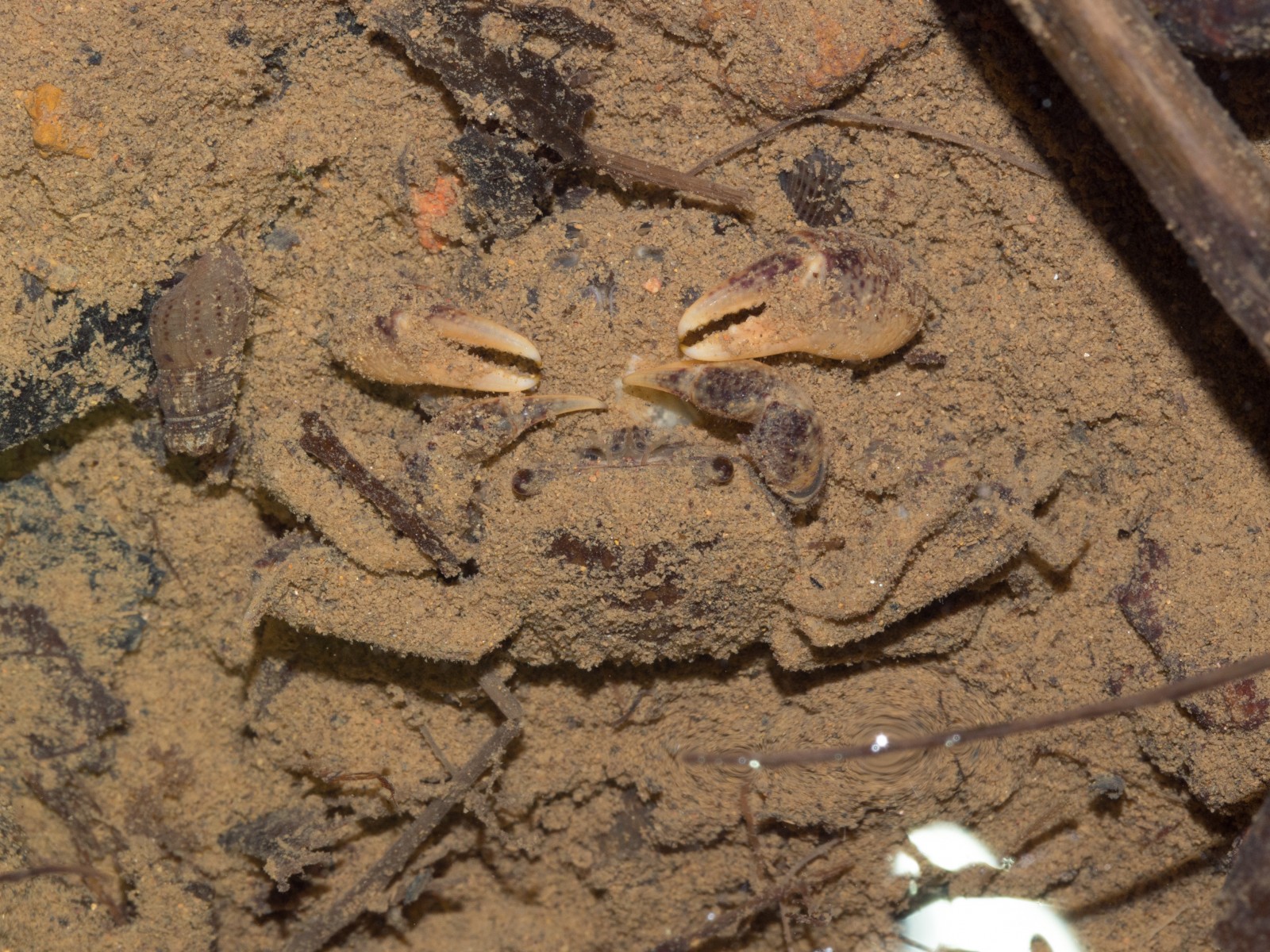How creepy crawlies woo their valentines
Valentine’s Day is the annual occasion for people to do something extra-special to express their love for their other halves, usually with flowers, a card and a meal.
Animals, too, have their own colourful repertoire of courtship tactics. And the place where they show their love can be even more romantic than candlelit restaurants, with rainforest trees towering over them and crystal-clear mountain streams gushing past.
Even arthropods – invertebrates with hard body armour, no backbone and lots of legs that people refer to as creepy crawlies – like to show off their handsomeness and sensitivity to their prospective mates.
It’s complicated
Arachnologist Associate Professor Li Daiqin from NUS Biological Sciences has seen many spider couples get together over the years. His speciality is the jumping spiders which have excellent eyesight and colourful bodies. One species he has been observing closely is Siler semiglaucus, also known as the Metallic Jumper.
The female spider leaves a trail of silk thread behind her as she navigates through the foliage. This is mainly for safety, as one would do in rock climbing. But when a male of the same species comes across it, he gets attracted by the scent and follows the thread.
When the male and female spiders finally make visual contact, the male will raise his front legs and his abdomen in a mating dance. If the female seems receptive, or at least not threatened, he will edge closer in a zig-zagging path and try touching her with his legs. Sometimes, this causes her to recoil in disgust, or throw a violent temper sending him helter-skelter. After she cools down, he might try it again.
In very few spider species in the world, such as the nursery web spider Pisaura mirabilis, the male even gives his prospective mate a present of an edible titbit wrapped in silk.
In some species, aggressive spiders like aggressive mates, but in other species, an aggressive individual is more amenable to a gentle individual of the other sex. No one yet knows why. Animal “personality” is an emerging field of research and is also one of the areas which Assoc Prof Li’s lab is looking into.
A spider’s attractiveness is also determined by complex patterns of colours on its body that reflect both visible and ultraviolet light. This constitutes another major research theme in Assoc Prof Li’s lab, which has special imaging equipment to record patterns as spiders see them, and sophisticated statistical methods to analyse the patterns.
Spider love is very complicated, as Assoc Prof Li aptly summed up.
Nothing can separate them
Deep in the forested hills of Singapore on a moonlit night, two crabs are locked in an embrace, submerged in the crystal-clear waters of a stream gurgling through a steep rock gully.
When NUS researchers came upon them, they had already been in that position for a long time - so long that they were almost buried by the sediment that was being gradually deposited by the flowing water. The researchers were careful not to disturb them, as they were none other than the critically endangered freshwater crab Johora singaporensis, found in only a few places in Singapore undisturbed by humans, and nowhere else in the world.
Associate Professor Darren Yeo Chong Jinn and his team from NUS Biological Sciences are fighting to save Johora singaporensis from extinction, in collaboration with the National Parks Board and Wildlife Reserves Singapore. They are among the very few people who have seen those crabs “do it”.
While crabs look somewhat like aliens with their eyestalks, their copulation reminds one of spaceships. When it is time, the male opens a “hatch” under his body, from whence a pair of futuristic-looking tubular structures, called gonopods, extend outwards and dock with two “ports” on the underside of the female “spaceship”. Packets of sperm are ferried through the gonopods.
Dr Jose Mendoza, curator of the crustacean collection at the NUS Lee Kong Chian Natural History Museum, explains that gonopods come in endless designs festooned with an assortment of hooks, spines and brushes that make them look like feather dusters, porcupines or test tube cleaning brushes. These are thought to either help the gonopods remain in position or sweep away the sperm of other males. Each crab species has its own gonopod design, which scientists think may act as a lock-and-key mechanism to make sure the crabs do not do it with the wrong species.
Some male crabs “kidnap” a female that is about to moult, as the female’s exoskeleton is only soft enough to admit the gonopods just after moulting. The male would hold on to her with his big claws and they would go places together for as long as she takes to shed her hard shell.
So, when romance is in the air, creepy crawlies do have some ingenious talents bestowed upon them by nature to profess their “love” and perpetuate their species. They do not need to wait till Valentine’s Day to make it work, but they do need the right natural habitat where they can be left to their own devices.





